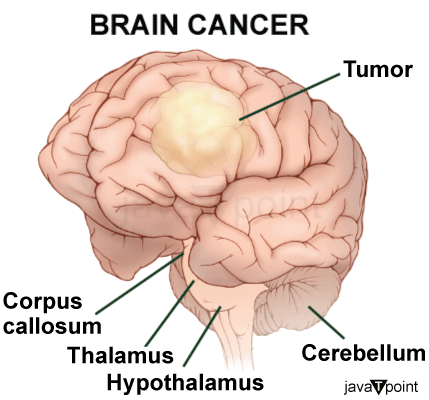Brain CancerThe growth of cancerous cells in your brain is what leads to brain cancer. Cancer cells produce cancers, which can develop slowly or quickly depending on the type. Treatment for brain cancer aims to remove the cancer and any lingering cancer cells. Survival rates for brain cancer are rising because of new treatments, especially for slow-growing cancers. An overview of brain cancers and cancer will be given in this article, along with warning signals and available treatments. 
What is Brain Cancer?Primary brain cancer, often known as brain cancer or simply brain cancer, is characterised by aberrant brain cell proliferation that results in the development of masses called brain cancers. The illness is referred to as secondary or metastatic brain cancer when this occurs. Some cancerous brain cancers have a very rapid rate of growth. These malignant cancers can seriously harm your health. Brain cancers must be treated as soon as they are found since they might be lethal. Brain cancer is extremely rare. A person's lifetime chance of having a malignant brain cancer is estimated by the American Cancer Society to be less than 1%. Symptoms of Brain CancerThe symptoms of brain cancer are influenced by the cancer's size and location. Many brain cancer symptoms, particularly in the early stages, are also present in several less serious diseases. It seems improbable that brain cancer would explain many of these symptoms because they are so common. However, you should contact a doctor if any of these symptoms persist for longer than a week, manifest suddenly, aren't relieved by over-the-counter painkillers, or are causing you anxiety.
Early identification of brain cancer significantly improves the prognosis. If you frequently experience any of the following signs or suspect that your symptoms may be more serious, see a doctor right once to have them examined. Causes and Risk Factors for Brain CancerThe cause of primary brain cancer is uncertain. Investigations by Trusted Source, however, have linked high ionising radiation exposure to a higher chance of developing brain cancer. Radiation therapy procedures, medical imaging tests (CT scans and X-rays), and maybe workplace exposure are the most prevalent sources of ionising radiation. Other risk factors for developing brain cancer include advanced age, a family history of the disease, long-term smoking, exposure to pesticides, herbicides, and fertilisers, mononucleosis, or Epstein-Barr virus infections. Working with substances that cause cancer, such as lead, plastic, rubber, petroleum, and some textiles, is another risk factor. There are some cancer types that are more likely than others to lead to secondary brain cancer, which develops when cancer spreads from another part of your body to your brain. Lung, breast, kidney, bladder, and breast carcinoma are among the cancers that frequently spread to the brain. Stages of Brain CancerThe names of brain cancer depend on whether they are found in the brain or upper spine. It also depends on the stage of brain cancer. The stage of cancer tells you how quickly it's expected to develop. Stage 1 is the slowest grade, and stage 4 is the fastest. Stages range from 1 to 4. One of the most prevalent types of brain cancers is the glioma. Gliomas, which make up about one-third of all cases of brain cancer, are brain cancers that start in the glial cells.
Methods to Detect Brain CancerOne of the following tests may be used by your doctor to identify the root of any brain cancer, depends on the symptoms you may be experiencing:
Treatment of Brain CancerThere are numerous methods for treating brain cancer. The course of treatment for cancers that have metastasized to distant sites will be distinct from that for primary brain cancer. You might undergo one or more therapies, depending on the kind, size, and location of your brain cancer. We'll also take your age and general health into account. One treatment option for brain cancers is surgery. Surgery is the most popular form of treatment for brain cancers. Depending on the cancer's location, it can be possible to entirely, partially, or not at all remove it.
How to reduce the risk of Brain Cancer?Although there is no cure for brain cancer, there are some ways to reduce your risk, including avoiding: Smoking and drugs that cause cancer, unnecessary exposure to radiation. Brain Cancer PrognosisAlthough receiving a diagnosis of brain cancer is alarming, new therapies and research are increasing the likelihood that individuals will survive the condition. Depending on the type of brain cancer, as well as variables like your age at diagnosis and the stage of the cancer, the actual 5-year survival percentages can vary substantially. For instance, meningiomas are the most prevalent type of brain cancer in adults. For individuals 20 to 44 years old, their 5-year survival rate was 84%, and for those 55 to 64 years old, it was 74%. Keep in mind that such numbers are based on historical statistics, and that survival rates today are probably far higher. The stage of your brain cancer and your specific prognosis can be discussed with your doctor.
Next TopicBrain Cancer Treatment
|
 For Videos Join Our Youtube Channel: Join Now
For Videos Join Our Youtube Channel: Join Now
Feedback
- Send your Feedback to [email protected]
Help Others, Please Share









